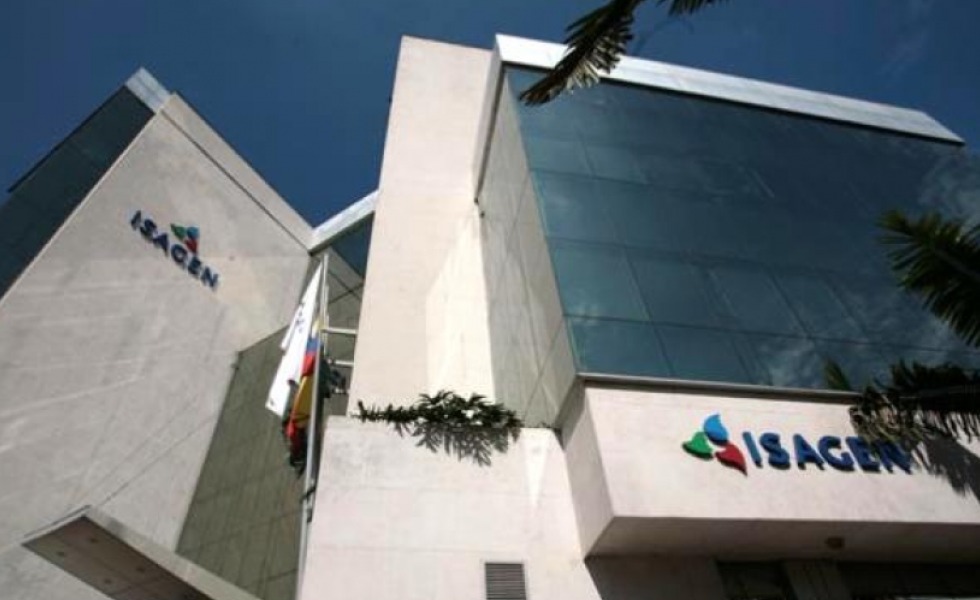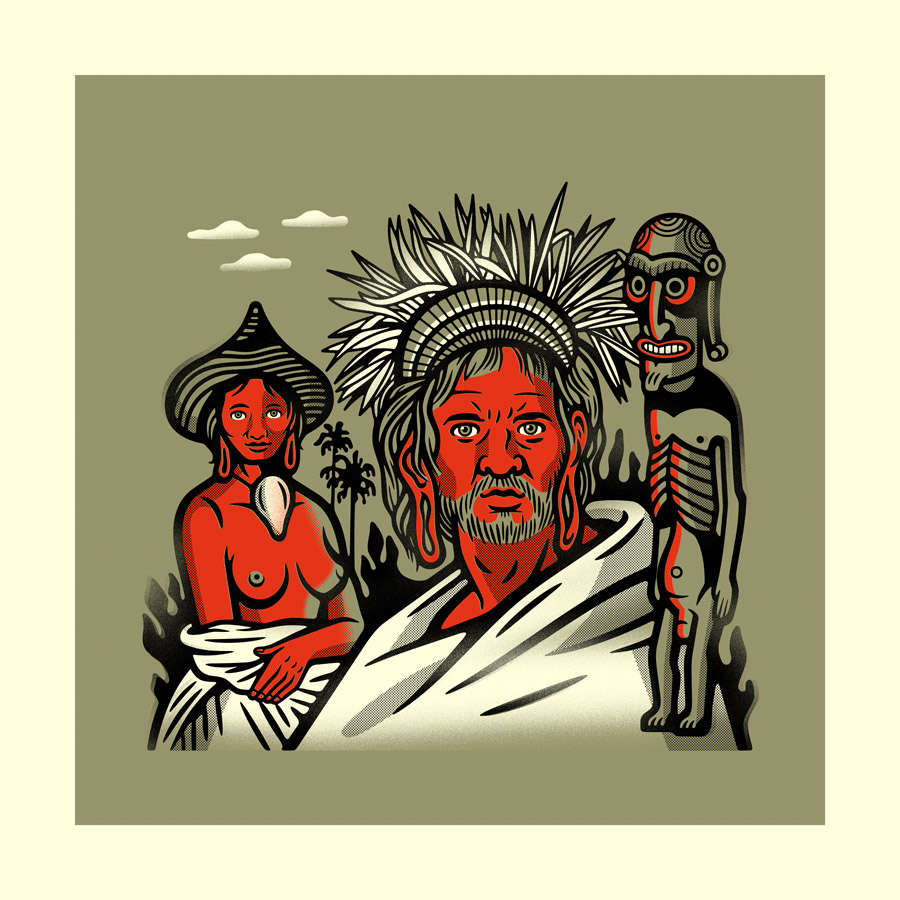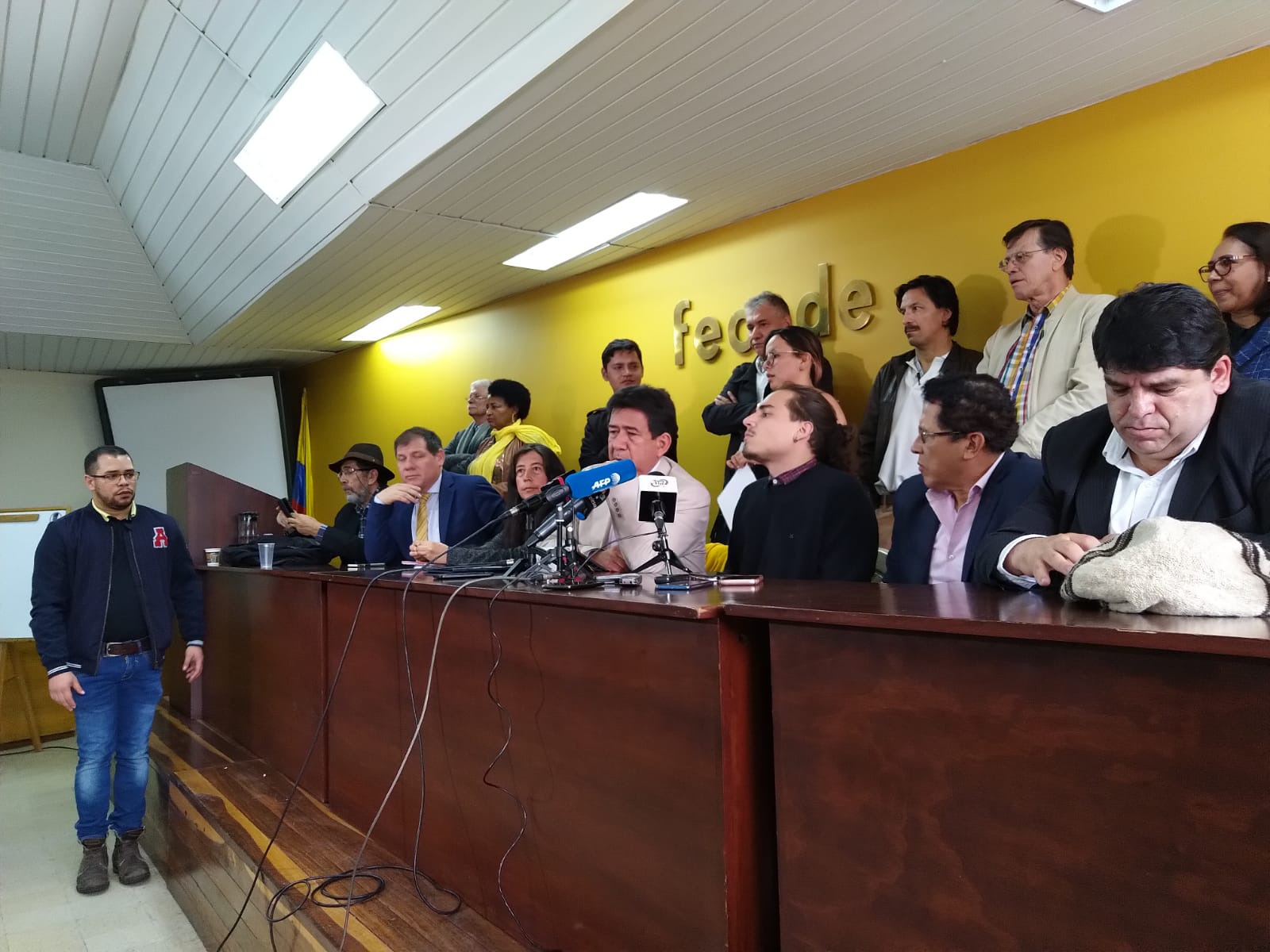This article was co-authored by Helene Dötsch
“The pandemic might have halted a lot of things, but definitely not child trafficking,” explains Katherine Jaramillo to the Bogotá Post. Jaramillo is the director of Valientes Colombia, an NGO dedicated to the prevention of child trafficking and sexual exploitation.
Valientes has recently worked with a 16-year-old girl who accepted a work offer through social media to improve her financial situation. When she turned up at the interview, the man offered her money in exchange for sex. Having already provided a lot of personal information, the girl felt complicit and approached Valientes to get help.
Child trafficking has tripled over the last 15 years, according to UNODC.
Falling into the trap of exploitative labor is a phenomenon that increasingly affects vulnerable children and adolescents. “Children account for 13% of human trafficking worldwide, in Colombia, they assume 12% in all human trafficked,” Rocío Urón Durán highlights to the Bogotá Post in an interview. She is the coordinator for human and migrant trafficking at The United Nations Office on Drugs and Crime (UNODC). Although the percentage is not much different, Colombia has some alarming dynamics when it comes to child trafficking. Colombia has specific conditions, a dangerous mix of structural factors, dysfunctional policies, and blind cultural norms.
A land of origin, transit, and destination
Colombia enjoys a privileged geographical position, being the access point between North and South America. This, however, predetermines its role as a key migratory and human trafficking hub – the UN found that in 2020, people from 39 different countries (most predominantly people from Haiti) passed through Darién Gap, the perilous mangrove swamp that bridges the two continents.
Undoubtedly, this puts tens of thousands of migrants in a position of extreme vulnerability. Perhaps the most recent example of this is the humanitarian crisis seen in Necoclí near the border with Panama, where over 10,000 stranded migrants contributed to the collapse of public services. And according to the UNODC, the rise in child trafficking we have seen since 2019 directly coincides with migration flows, putting unaccompanied minors in a precarious situation.
This is particularly visible in many areas of Colombia, such as the major cities or areas with vast extraction industries. For example, the highway between the capital Bogotá and the country’s second-largest city Medellín is considered one of Colombia’s worst sites for child sex trafficking and exploitation. Criminal groups abuse underprivileged girls, often between the age of 12 and 15, to offer sexual services to the drivers passing through the service station Caracolí between the municipalities of Honda and La Dorada, as reported by El País.
Predators hit social networks

There’s a rich breeding ground for children to be abused, mistreated, and trafficked, and the fact that Colombia continues to be the most unequal country in Latin America isn’t helping. The recession caused by Covid-19 puts children at even greater risk of being trafficked. Moreover, during mandatory quarantines, social networks became new zones of danger that directly encourage different risk scenarios. According to UNODC, the anonymity of traffickers on the Internet, coupled with the high number of boys, girls, and young people who use the Internet uncontrolled, is highly precarious.
One of the most common strategies to recruit minors is catfishing. It has become common for predators to create false profiles and use fake photos to connect with minors online. Then, by inciting situations like sexting and requesting sexually explicit content, perpetrators pressure the child through sextortion. In some cases, they enter the household and abuse the minor for pornographic or other purposes, including recruitment for the webcam modeling industry. As the New York Post reports, in Colombia there are around 60,000 webcam models, making up 30% of the worldwide share.
But blackmail is not the only issue here. Facing limited opportunities to make a living, more and more teenagers began to turn to the digital space and their WhatsApp networks, and were quickly lured into exploitative structures through job offers.
“It’s common for perpetrators to feed on necessity,” Jaramillo, of Valientes, affirms. She tells of a case where a man went to the poorest neighborhoods in the coastal city of Cartagena, giving out food packages in exchange for sex with girls in the communities. So, while it could seem that direct prostitution is on the decline, child trafficking takes on novel forms, with activity “behind closed doors” increasing.
Child exploitation, normalized?
Many of the modalities of child trafficking are fueled by many cultural and socio-economic preconceptions. For example, Venezuelan migrants tend to fall victims to trafficking networks simply because they have limited access to education or the job market, and it’s discrimination and xenophobia that then normalize the crime. Moreover, according to Fundación Renacer, a Colombian research institute focused on exploring sexual exploitation in Colombia, it’s the capitalist society that crowns consumption as the supreme value, and, coupled with rigid notions of the role of both women and men, beauty and youth are indirectly turned into objects for purchase.
According to Valientes, selling sexual favors by children has become so normalized that people – and even authorities – believe it’s “mere” prostitution. “When you go to report to the police in Cartagena, it’s like a joke. Often, they simply don’t do anything,” Jaramillo adds.
She further affirms: “People don’t know it’s a crime, so they can’t become actors of change,” explaining that this is why even family members can become perpetrators. Often, mothers that went through abuse and other traumatic experiences when growing up feel like they got through it “just fine”, so their children will too. These values can then be passed on: For example, there’s been a recent case of a woman in the Cesar department selling her 14-year-old sister’s virginity for a phone and money.
Tourism as an underestimated driver
There’s a normalization of child trafficking in Colombian society, but it’s not just Colombians guilty of flawed preconceptions. The most touristic regions in Colombia also report the highest numbers of illicit prostitution and child labor. Particularly in Cartagena, a popular Caribbean destination, the figures are alarming. An estimated 650 minors are systematically victimized through the sex trade, of which 70% are girls and 30% boys.
This high number of child trafficking cases in the coastal city is mainly related to two factors. Cartagena is ranked the most attractive tourist destination by foreigners visiting Colombia. At the same time, as DW reports, 26% of Cartagena’s inhabitants live in poverty, and many families have no other way out of deprivation than to sell their young daughters and sons into prostitution rings.
Even though the total number of cases is somewhat lower in Medellín and Bogotá, people working in the tourism industry and local authorities report the same problematic dynamic of sex tourism and related child exploitation.
The problem is widely known here in Medellín where we are based. When we asked Jose, a police officer patrolling in one of the city’s most popular tourist districts, Parque Lleras, about the situation he answered rhetorically: “Have you ever been here at night?” continuing by affirming that his regular activities include checking the age of people in the area after dark.
In Medellín’s touristic neighborhoods, hotels and hostels are frequently confronted with the prostitution of minors. “If we register suspicious behavior, we call the police, but sometimes it’s difficult to detain the suspects,” Sara, a receptionist at the frequently visited Hotel Charlee, says.
Following the recommendations by the government, most hotels try to regulate minors entering their facilities without an authorized guardian: “Without [identification] or a passport, there is no entry. Anyone claiming to be a relative or guardian not only has to leave all their details but also can’t leave the hotel without the person they are registered with or enter with another person,” explains a receptionist — who also wanted to remain anonymous — at Hotel Marquee, another tourist haunt in Medellín.
However, looking at the hotel industry only overshadows the darker, less visible traces exploitative sex tourism follows. Since Airbnb and private short-term rentals have come to dominate the lodging industry, the possibilities for control are becoming limited, and measures are increasingly falling into the realm of individual moral judgments. Basically, after the keys are handed over, these places are left to the devices of their short-term occupants.
According to Fundación Renacer, exploitative sex tourism takes place in the “private sphere”. Minors sign up on popular platforms like Tinder, Grindr, or Happn either to offer their services independently or because they are being told to do so. Even if they are signed up as adults, there are no real safety checks on those platforms, and it becomes an easy task to sell services without any checks and balances.
The role of preconceptions in sex tourism
But why are so many foreign tourists susceptible to paying for sex with minors? Shouldn’t travelers be particularly cautious? Many of the travelers in Colombia have a relatively high level of education and as the majority of tourists are from North America and Europe, they are also from places where child abuse is massively frowned upon.
According to Fundación Renacer, tourists take advantage of their anonymity, the lack of control by the authorities, and the permissiveness of some social groups (cab drivers, managers, or other hotel workers). But there’s even a more shocking dynamic behind tourism and sex trafficking:
“Some foreign sex tourists believe that the destination countries are underdeveloped and that by exploiting children, they are helping them to better themselves,” reports Fundación Renacer. “The sex tourist feels superior to his victims because of his greater economic capacity believing that this gives them the authority to abuse the environment and people.”
Tourism may not be directly responsible for the existence of commercial sexual exploitation of children and adolescents. However, sexually exploitative tourists do take advantage of the easy access to the sex tourism industry. This industry, in turn, helps to create demand by promoting exotic (and erotic) images of the beautiful youth.
Sector players might fear Colombia could lose attractiveness as a tourist destination if they start discussing the relationship between tourism and child exploitation. Those who visit Colombia because of sex tourism also order their beer in the bars, eat their food in the local restaurants, and visit tourist attractions.
Still, child prostitution is mainly a demand problem, and to protect children from exploitation, people working or driving the industry must work on reducing this demand. According to Sara, the receptionist at Charlee, this should start with explaining the problems to hotel guests through awareness campaigns and holding open debates with anyone in the industry, including bars, guides, and travel agencies.
High impunity rates for child traffickers
On a national level, the authorities are trying to combat child trafficking by allocating investigators, the police, and social workers to identify, prevent and assist cases of child trafficking.
In 2018, the government announced strengthening penalties in the penal code for crimes of commercial sexual exploitation. They also established more comprehensive provisions to protect children against cybercrimes involving commercial sexual exploitation by sharing information and investigating suspicious profiles.
But many of those programs fail because of the same hurdles. According to Valientes, despite new laws and numerous public programs, the number of abuses is increasing every year. Perpetrators are even less often prosecuted and many victims do not report their abuse.

And, even if the perpetrators are detained, not much happens. The problem is that the functionaries don’t always necessarily understand how to typify the crime in the right way. “The law stays on the paper but is not complied with,” notes Jaramillo from Valientes. She points out how in 2019, a major child trafficking ring was dismantled with zero convictions in the end.
Danitza Marentes, Valientes’ director of ESCNNA Observation (Commercial Sexual Exploitation of Boys, Girls, and Adolescents) explains that the institutional and judicial weaknesses in Colombia result in a child trafficking impunity rate of a staggering 90%. This statistic coincides with other similar sources: According to the state prosecutor Mario Gómez Jiménez, out of 85,000 investigations into claims of child sex abuse between 2005 and 2018, only 6,116 ended in a conviction.
Only a holistic strategy can help
Can better law enforcement alone solve the problem of child trafficking? In reality, authorities can’t simply prosecute their way to social justice. Of course, people who exploit other people should be punished, but the problem must be tackled on several levels and from various angles simultaneously.
In the long term, both UNODC as well as Valientes agree that Colombia needs to address structural issues, eradicate poverty, improve access to decent work, and defeat the prevalent, persuasive power of easy money in developing economies. Only then, the country has a chance to fight child labor and trafficking.

On a cultural-societal level, Fundación Renacer argues it is necessary to combat the strict sexist thought patterns, particularly to prevent the abuse of female or homosexual youth. Governmental organizations and nongovernmental foundations like Valientes, Save the Children Colombia, and Fundación Renacer do significant educational work by reaching out to the affected families and young people with informative campaigns. The premise is: Only those who can formulate and understand their own rights are empowered not to let themselves be exploited and, in the ideal scenario, to actively resist.
Both on the societal and judicial level, there needs to be further development in language directed towards the problematics of child maltreatment and trafficking. For example, while the groups at high risk include displaced Venezuelans, Afro-Colombians, indigenous communities, individuals with disabilities, internally displaced persons, or those living in areas with armed groups’ presence, it’s not possible to draw a clear profile of a victim. As Durán from UNODC points out, not all victims are from low-income families or lack education.
“Apart from the necessary solutions, such as legal norms and access to work, we need to prioritize education,” Durán tells The Bogotá Post. “We need to generate information, knowledge, and empowerment so that everyone knows what trafficking is, what the capturing methods are, and how to protect oneself.”
Taking into account the views of those interviewed for this story, it is clear that combating the problem needs efforts that work from the top-down and the bottom-up. An active civil society that discusses relations between men and women, as well as the role of children within families, will help battle normalization and reset existing values. At the same time, those who wield political or economic power must set the right course for advancing gender rights, reducing poverty, and protecting the most vulnerable ones.
Our writers tried to ring the National Child Abuse Helpline, but the first number didn’t work. With the correct area code, the phone rang, but we only got an answer after the third attempt.
Maybe it’s a coincidence, or perhaps it’s a symptom of an encrusted society in which child abuse has somehow become a commonality. And we are not talking about Colombia alone. As highlighted in this article, the lines between perpetrator, victim, and contributor have long been unclear. Whether tourist, mother, gang member, politician, or apathetic bystander, it is almost impossible to distinguish who bears responsibility.
At the end of the day, it’s our individual responsibility to keep our eyes open, listen, and shape discourses for those that build our future, the children themselves.
How we can help fight against child trafficking
First of all, it’s necessary to recognize the indicators of human trafficking.
- Poor living conditions
- Multiple people in cramped space
- Inability to speak to individual alone
- Answers appear to be scripted and rehearsed
- The employer is holding identity documents
- Signs of physical abuse
- Submissive or fearful
- Unpaid or paid very little
- Under 18 and in prostitution
If you are in contact with a victim, here are some questions you can ask:
- Can you leave your job if you want to?
- Can you come and go as you please?
- Have you been hurt or threatened if you tried to leave?
- Has your family been threatened?
- Do you live with your employer?
- Where do you sleep and eat?
- Are you in debt to your employer?
- Do you have your passport/identification? Who has it?
In case you suspect or know about a case, inform:
- If you believe you have identified someone still in the trafficking situation, alert law enforcement immediately at the numbers provided below. It may be unsafe to attempt to rescue a trafficking victim.
- If, however, you identify a victim who has escaped the trafficking situation, there are a number of organizations to whom the victim could be referred for help with shelter, medical care, legal assistance, and other critical services.
Get in contact with:
Emergency line: 123
For urgent situations, notify Colombian law enforcement immediately by calling the hotline or reporting a case directly at a police station.
National Hotline of Human Trafficking:
Hotline: 018000522020
Call the National Human Trafficking Hotline, a national 24-hour, toll-free, anti-trafficking hotline. Call to report a tip and connect with anti-trafficking services in your area. The Hotline is equipped to handle calls related to sexual exploitation, forced labor, slavery, servitude, begging by others, servile marriage, extraction of organs, and sexual tourism.
Download:
LibertApp on Google Play allows you to report human trafficking cases with a click of a button.
NGOs
BOGOTÁ
Sede Administrativa Calle 76 Bis No 20c- 51
Teléfono: 8 05 02 17 – 2 48 65 42
[email protected]
CARTAGENA
Teléfono: 6 69 94 30 – 643 2631
[email protected]
RIOHACHA – GUAJIRA
Celular: 320 577 51 58
[email protected]
- Celular +057 (304) 6730809
- E-mail:[email protected]
- Celular y WhatsApp 3173717245
- E-mail: [email protected]
- Workplace @Salvaguarda Colombia





